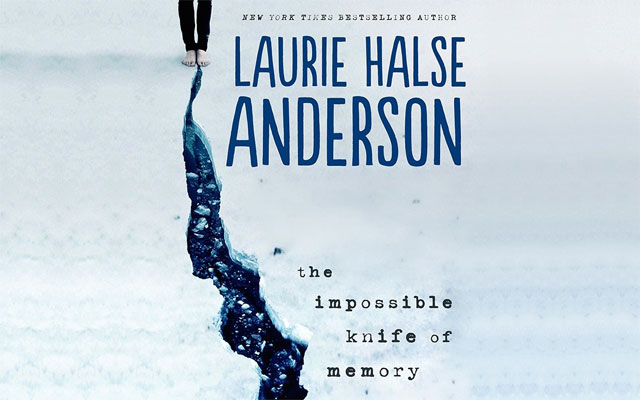REVIEW: “The Impossible Knife of Memory” sheds light on PTSD
October 12, 2015
The book The Impossible Knife of Memory by New York Times best-selling author Laurie Halse Anderson is one of the Black Eyed Susan nominees for 2015. With Veterans Day on November 11, and the story centered around a girl who’s father is a war veteran with a problem known as Post-Traumatic Stress Disorder, I had several reasons to read the novel.
The Impossible Knife of Memory is about a senior named Hayley Kincain who has been “home” schooled most of her life by her dad as they traveled across the country moving from job to job. Trucking across the country was the only job he had managed to keep thanks to the PTSD he developed after serving several tours in the Middle East. Captain Kincain decided to quit trucking and try to live a normal life, with Hayley in high school during her senior year instead of riding shotgun in the truck. They move into their old house that Hayley doesn’t even remember in the town where the Kincain family had been living for years.
Unfortunately, her dad starts getting worse, and she starts taking days off to try to help him. The story follows Hayley as she struggles to balance between her grades, boyfriend troubles, her friends’ broken families and hers, as well as her own mental health.
The book jacket teases: “How do you keep your father alive when death is stalking him?”
I found this book a compelling read, finishing it within 24 hours of opening to the first page. I didn’t want put it down, and when I had to put a bookmark in to do some prior commitments, I found my mind on the book every step of the way.
Prior to reading this story, I had researched a bit on PTSD, trying to learn more about a world I will hopefully never experience. PTSD can be caused by any traumatizing event that a person experiences or observes, though it can also be developed by a loved one going through a traumatizing event. This is the case for Hayley, and, I suspect, the case for many teens living with PTSD sufferers.
“The person who develops PTSD may have been the one who was harmed; the harm may have happened to a loved one, or the person may have witnessed a harmful event that happened to loved ones or strangers,” reports the National Institute of Mental Health in an article describing PTSD.
The Impossible Knife of Memory, however, helps open the doors into the world of living with this disorder. At one point in the book, in one of the few chapters that was through Hayley’s father’s eyes, he describes PTSD as the sand left on your body after a sandstorm, beautifully illustrating what having the disorder is like.
“I wash and wash trying to get rid of the sand. Every grain is a memory. I scrub my skin until it bleeds, but it’s not enough. The named winds of the desert blow under my skin. I close my eyes and I hear them,” Captain Kincain says.
One of my favorite parts about this book is how much thought Anderson put into describing Captain Kincain’s PTSD. She made it seem a lot more real than it does whenever you just read about it, opening a door into the hidden world that most literature that I’ve seen waters down.
Approximately 7.8% of Americans will suffer from PTSD at least once in their lives according to the Post-Traumatic Stress Disorder website run by the Nebraska Department of Veteran Affairs, amounting to a whopping 5.2 million people. Some of these are normal people, some of them are veterans or their loved ones, and some of them are emergency service workers such as the police, firefighters, or the emergency medical service responsible for saving the lives of these people.
Anderson shows the raw side of Post Traumatic Stress Disorder: the ugly, unmasked side. Don’t let that discourage you, though: this book is well worth the read.



